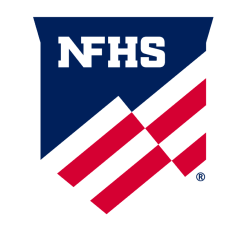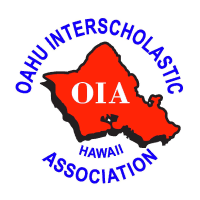
Kickoff Procedure Tweaked in High School Soccer
The new kickoff procedure is one of eight changes recommended by the National Federation of State High School Associations (NFHS) Soccer Rules Committee at its January 24-25 meeting in Indianapolis. All rules changes were subsequently approved by the NFHS Board of Directors.
Previously, the ball had to be kicked forward from the center of the field to begin play at the beginning of the game, after halftime and after each goal. The new rule states that the ball may clearly move in any direction.
“There have been a number of rule changes in soccer (at other levels), so we look to see if they are appropriate for high school competition,” said Theresia Wynns, NFHS director of sports and officials and liaison to the Soccer Rules Committee. “We want to ensure that the rules we consider are what is best for the (high school) game and not difficult for officials to implement.”
The change to the kickoff procedure in Rule 8-1-3 requires a change in Rule 13-1-2, which now states that all free kicks, with the exception of penalty kicks, may be taken in any direction. The kickoff has been eliminated as an exception.
In addition, Rule 10-1-3f states that a goal may not be scored directly from a kickoff into the kicking team’s own goal. This change is consistent with the concept that a team cannot score against itself from a free kick.
Players are now permitted to use a stutter step or a hesitation move when taking a penalty kick as long as there is continuous movement according to a change in Rule 14-1-4. Stutter-stepping is not an interruption of movement toward the ball.
A change in Rule 4-2-9 permits a soft-padded headgear that meets the ASTM standard to be worn. This allows, but does not require players to use the newer headgear styles that are not just headbands. Wynns said schools, students and parents are free to make their own assessments of this equipment. Due to this rule change, Exception No. 1 to Rule 4-2-1 is no longer necessary and has been removed from the rules book.
An addition to Rule 4-1-1d allows players to wear visible arm compression sleeves and visible leg compression sleeves as long as they are a single, solid color matching the predominant color of the jersey or shorts. This addition to the existing rule is to maintain consistency with current uniform rules requirements and color restrictions.
The final change to Rule 5-1-3f allows officials to use electronic communication devices if permitted by the state association. Wynns said this change will permit officials to use devices currently available to improve communication and allow for a better officiated game.
A complete listing of all rules changes will be available soon on the NFHS website at www.nfhs.org. Click on “Activities & Sports” at the top of the home page, and select “Soccer.”
According to the 2016-17 NFHS High School Athletics Participation Survey, soccer is the fifth-most popular sport for boys with 440,322 participants and the fourth-most popular sport for girls with 381,529 participants. A total of 12,054 schools offered boys soccer in 2016-17 and 11,676 schools offered girls soccer.
# # #
About the National Federation of State High School Associations (NFHS)
The NFHS, based in Indianapolis, Indiana, is the national leadership organization for high school sports and performing arts activities. Since 1920, the NFHS has led the development of education-based interscholastic sports and performing arts activities that help students succeed in their lives. The NFHS sets direction for the future by building awareness and support, improving the participation experience, establishing consistent standards and rules for competition, and helping those who oversee high school sports and activities. The NFHS writes playing rules for 17 sports for boys and girls at the high school level. Through its 50 member state associations and the District of Columbia, the NFHS reaches more than 19,800 high schools and 12 million participants in high school activity programs, including more than 8 million in high school sports. As the recognized national authority on interscholastic activity programs, the NFHS conducts national meetings; sanctions interstate events; offers online publications and services for high school coaches and officials; sponsors professional organizations for high school coaches, officials, speech and debate coaches, and music adjudicators; serves as the national source for interscholastic coach training; and serves as a national information resource of interscholastic athletics and activities. For more information, visit the NFHS website at www.nfhs.org.









